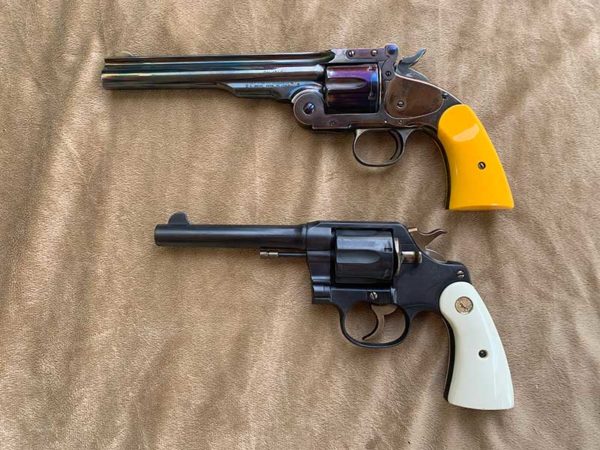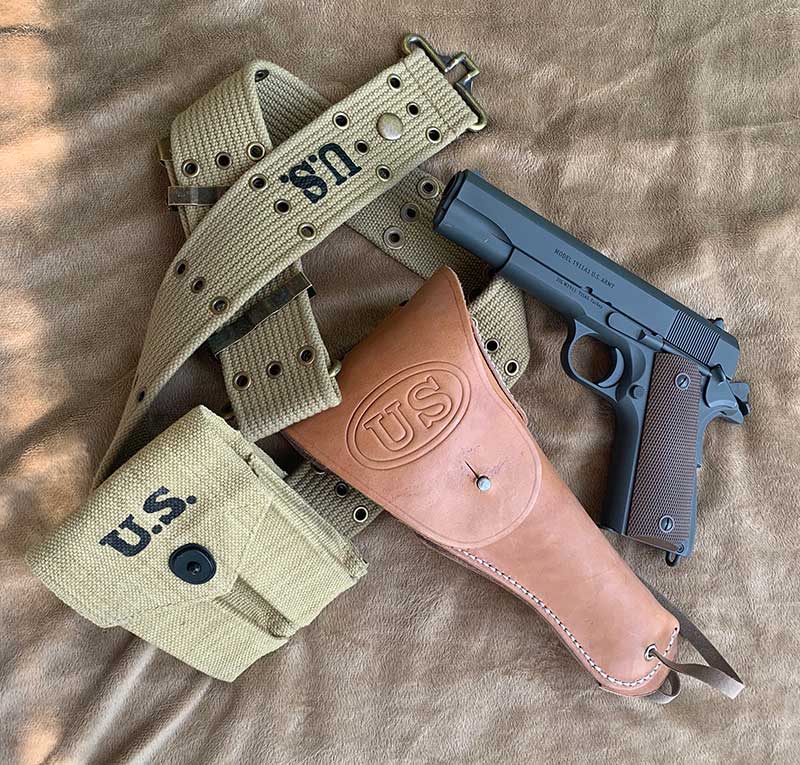Category: Cops
I feel safer already!

Police say a suspect has been arrested after he was shot with his own gun by a man he was attempting to rob in East Mount Airy on Wednesday.
PHILADELPHIA – The Philadelphia Police Department is investigating a shooting where an attempted robbery victim gained control over a suspect and shot him.
According to police, the attempted robbery occurred on the 8000 block of Rodney Street in a driveway at 11:24 a.m.
Authorities say a 69-year-old man was unloading groceries from his car when a 24-year-old suspect approached him, saying, “This is a robbery,” and pointed a gun at him.
After a struggle over the weapon ensued, the victim was able to gain control of the gun, which discharged one time, grazing the suspect in the abdomen, according to police.
Neighbors reportedly heard the struggle, and immediately called police.
Police say they do not believe the victim was targeted during the incident, and say the suspect was likely just “cruising” the neighborhood.
“See someone by themselves and take an opportunity,” said Philadelphia Police Capt. John Walker.
Officials say the suspect was transported to Albert Einstein Medical Center, where he was placed in stable condition. Police say the victim sustained an injury from a bite on his hand, but he did not seek medical treatment.
Walker commended the victim’s “courage,” however, he says he does not recommend fighting back in every situation.
According to authorities, police recovered the weapon used and the suspect is under arrest. FOX 29’s Kelly Rule reports the suspect will be charged with robbery, carjacking and other crimes.
Walker later confirmed the victim will not be charged.

“A standing military force, with an overgrown Executive will not long be safe companions to liberty.”
-James Madison
The IRS has stockpiled 4,500 guns and five million rounds of ammunition in recent years, including 621 shotguns, 539 long-barrel rifles, and 15 submachine guns.
The Veterans Administration (VA) purchased 11 million rounds of ammunition (equivalent to 2,800 rounds for each of their officers), along with camouflage uniforms, riot helmets and shields, specialized image enhancement devices, and tactical lighting.
The Department of Health and Human Services (HHS) acquired 4 million rounds of ammunition, in addition to 1,300 guns, including five submachine guns and 189 automatic firearms, for its Office of Inspector General.
According to an in-depth report on “The Militarization of the U.S. Executive Agencies,” the Social Security Administration secured 800,000 rounds of ammunition for their special agents, as well as armor and guns.
The Environmental Protection Agency (EPA) owns 600 guns. And the Smithsonian now employs 620-armed “special agents.”
This is how it begins.
We have what the founders feared most: a “standing” or permanent army on American soil.
This de facto standing army is made up of weaponized, militarized, civilian forces which look like, dress like, and act like the military; are armed with guns, ammunition, and military-style equipment; are authorized to make arrests; and are trained in military tactics.
Mind you, this de facto standing army of bureaucratic, administrative, non-military, paper-pushing, non-traditional law enforcement agencies may look and act like the military, but they are not the military.
Rather, they are foot soldiers of the police state’s standing army, and they are growing in number at an alarming rate.
According to the Wall Street Journal, the number of federal agents armed with guns, ammunition, and military-style equipment, authorized to make arrests, and trained in military tactics has nearly tripled over the past several decades.
There are now more bureaucratic (non-military) government agents armed with weapons than U.S. Marines. As Adam Andrzejewski writes for Forbes, “the federal government has become one never-ending gun show.”
While Americans have to jump through an increasing number of hoops in order to own a gun, federal agencies have been placing orders for hundreds of millions of rounds of hollow point bullets and military gear. Among the agencies being supplied with night-vision equipment, body armor, hollow-point bullets, shotguns, drones, assault rifles, and LP gas cannons are the Smithsonian, U.S. Mint, Health and Human Services, IRS, FDA, Small Business Administration, Social Security Administration, National Oceanic and Atmospheric Administration, Education Department, Energy Department, Bureau of Engraving and Printing and an assortment of public universities.
Add in the Biden Administration’s plans to grow the nation’s police forces by 100,000 more cops and swell the ranks of the IRS by 87,000 new employees (some of whom will have arrest-and-firearm authority), and you’ve got a nation in the throes of martial law.
The militarization of America’s police forces in recent decades has merely sped up the timeline by which the nation is transformed into an authoritarian regime.
What began with the militarization of the police in the 1980s during the government’s war on drugs has snowballed into a full-fledged integration of military weaponry, technology, and tactics into police protocol. To our detriment, local police—clad in jackboots, helmets, and shields and wielding batons, pepper spray, stun guns, and assault rifles—have increasingly come to resemble occupying forces in our communities.
As Andrew Becker and G.W. Schulz report, more than $34 billion in federal government grants made available to local police agencies in the wake of 9/11 “ha[ve] fueled a rapid, broad transformation of police operations… across the country. More than ever before, police rely on quasi-military tactics and equipment… [P]olice departments around the U.S. have transformed into small army-like forces.”
This standing army has been imposed on the American people in clear violation of the spirit—if not the letter of the law—of the Posse Comitatus Act, which restricts the government’s ability to use the U.S. military as a police force.
A standing army—something that propelled the early colonists into revolution—strips the American people of any vestige of freedom.
It was for this reason that those who established America vested control of the military in a civilian government with a civilian commander-in-chief. They did not want a military government ruled by force.
Rather, they opted for a republic bound by the rule of law: the U.S. Constitution.
Unfortunately, with the Constitution under constant attack, the military’s power, influence, and authority have grown dramatically. Even the Posse Comitatus Act, which makes it a crime for the government to use the military to carry out arrests, searches, seizure of evidence, and other activities normally handled by a civilian police force, has been greatly weakened by exemptions allowing troops to deploy domestically and arrest civilians in the wake of alleged terrorist acts.
The increasing militarization of the police, the use of sophisticated weaponry against Americans, and the government’s increasing tendency to employ military personnel domestically have all but eviscerated historic prohibitions such as the Posse Comitatus Act.
Indeed, there are a growing number of exceptions to which Posse Comitatus does not apply. These exceptions serve to further acclimate the nation to the sight and sounds of military personnel on American soil and the imposition of martial law.
Now we find ourselves struggling to retain some semblance of freedom in the face of administrative, police, and law enforcement agencies that look and act like the military with little to no regard for the Fourth Amendment, laws such as the NDAA that allow the military to arrest and indefinitely detain American citizens, and military drills that acclimate the American people to the sight of armored tanks in the streets, military encampments in cities, and combat aircraft patrolling overhead.
The menace of a national police force—a.k.a. a standing army—vested with the power to completely disregard the Constitution cannot be overstated, nor can its danger be ignored.
Historically, the establishment of a national police force accelerates a nation’s transformation into a police state, serving as the fundamental and final building block for every totalitarian regime that has ever wreaked havoc on humanity.
Then again, for all intents and perhaps, the American police state is already governed by martial law: Battlefield tactics. Militarized police. Riot and camouflage gear. Armored vehicles. Mass arrests. Pepper spray. Tear gas. Batons. Strip searches. Drones. Less-than-lethal weapons unleashed with deadly force. Rubber bullets. Water cannons. Concussion grenades. Intimidation tactics. Brute force. Laws conveniently discarded when it suits the government’s purpose.
This is what martial law looks like, when a government disregards constitutional freedoms and imposes its will through military force, only this is martial law without any government body having to declare it.
The ease with which Americans are prepared to welcome boots on the ground, regional lockdowns, routine invasions of their privacy, and the dismantling of every constitutional right intended to serve as a bulwark against government abuses is beyond unnerving.
We are sliding fast down a slippery slope to a Constitution-free America.
This quasi-state of martial law has been helped along by government policies and court rulings that have made it easier for the police to shoot unarmed citizens, for law enforcement agencies to seize cash and other valuable private property under the guise of asset forfeiture, for military weapons and tactics to be deployed on American soil, for government agencies to carry out round-the-clock surveillance, for legislatures to render otherwise lawful activities as extremist if they appear to be anti-government, for profit-driven private prisons to lock up greater numbers of Americans, for homes to be raided and searched under the pretext of national security, for American citizens to be labeled terrorists and stripped of their rights merely on the say-so of a government bureaucrat, and for pre-crime tactics to be adopted nationwide that strip Americans of the right to be assumed innocent until proven guilty and creates a suspect society in which we are all guilty until proven otherwise.
All of these assaults on the constitutional framework of the nation have been sold to the public as necessary for national security.
Time and again, the public has fallen for the ploy hook, line, and sinker
We’re being reeled in, folks, and you know what happens when we get to the end of that line?
As I make clear in my book Battlefield America: The War on the American People and in its fictional counterpart The Erik Blair Diaries, we’ll be cleaned, gutted, and strung up.
NASHVILLE, Tenn. (WKRN) — In Tennessee, you can buy and sell short-barrel shotguns and rifles—SB2628 made it legal earlier this year.
“We work in a gun shop and I am a firearms trainer,” said Blaise Lane, High Caliber Weaponry and Training director of operations. “So, I am hugely supportive of the Second Amendment and everyone’s ability to own firearms for self-defense, for sporting and any other requirement that they would have firearms for.”
High Caliber is a gun store in Nashville. Lane said there’s nothing wrong with the new law—it just doesn’t do anything. “Currently, it doesn’t change anything,” he said.
That’s because there’s already a federal law called the National Firearms Act (NFA) in place that’s allowed short-barrel guns since 1934.
In fact, Lane and his employees say the new law has probably caused more confusion than clarity.
“It’s a show bill,” he said. “The Tennessee legislature will already be prepared, should the NFA get abolished.”
The debate about guns has been prominent throughout the country the last few years. Critics of this new law say the bill’s passage is regressive despite the lack of effect.
“I believe it’s a step in the wrong direction because it’s slowly pushing the envelope and making it potentially easier to end some of the restrictions,” Silent No Longer Tennessee director, Greta McClain, said. “Which, some people call them restrictions, I call them safeguards.”
McClain, a former Metro Nashville police officer, also talked about her own personal experience with short-barrel guns.
“When I was with the police department, I was shot at three times by a man with a sawed-off shotgun. He was, at most, 15 feet away from me and missed,” she said. “So, the concern that I have, and I’m sure a lot of people have, is if somebody thinks that it’s appropriate for them to use deadly force, there’s just as much likelihood that they’re going to hit innocent bystanders as they are whomever they’re aiming at.”
McClain is referring to the notion that sawed-off shotguns are considerably less accurate.
Naturally, the Tennessee Firearms Association disagrees with McClain’s thoughts on the law.
“I think it is a step in the right direction,” director John Harris said. “It sends a message of the public policy that at least some of the legislators are holding at this point.”
But Harris did agree that the new law created uncertainty. “What it, unfortunately, has done is create some confusion in the public about whether or not a person still needs to go out and, if they acquire one, pay the federal tax and comply.”
Currently, to buy a short-barrel gun, you have to pay a $200 fee for taxes, file NFA paperwork, and send in your fingerprints for a background check.
Now, Harris and Lane both say they’ve had people tell them they can bypass those regulations with the new law in place, but that is not the case.
Harris went a step further in his criticism of gun laws in Tennessee. “Oh, they’re an absolute mess, they’re a disaster,” he said. “The laws should be simple enough that the average person, the average police officer, the average district attorney, the average judge, the average juror, the average person all agree, without having to look it up, what the law allows or prohibits.”
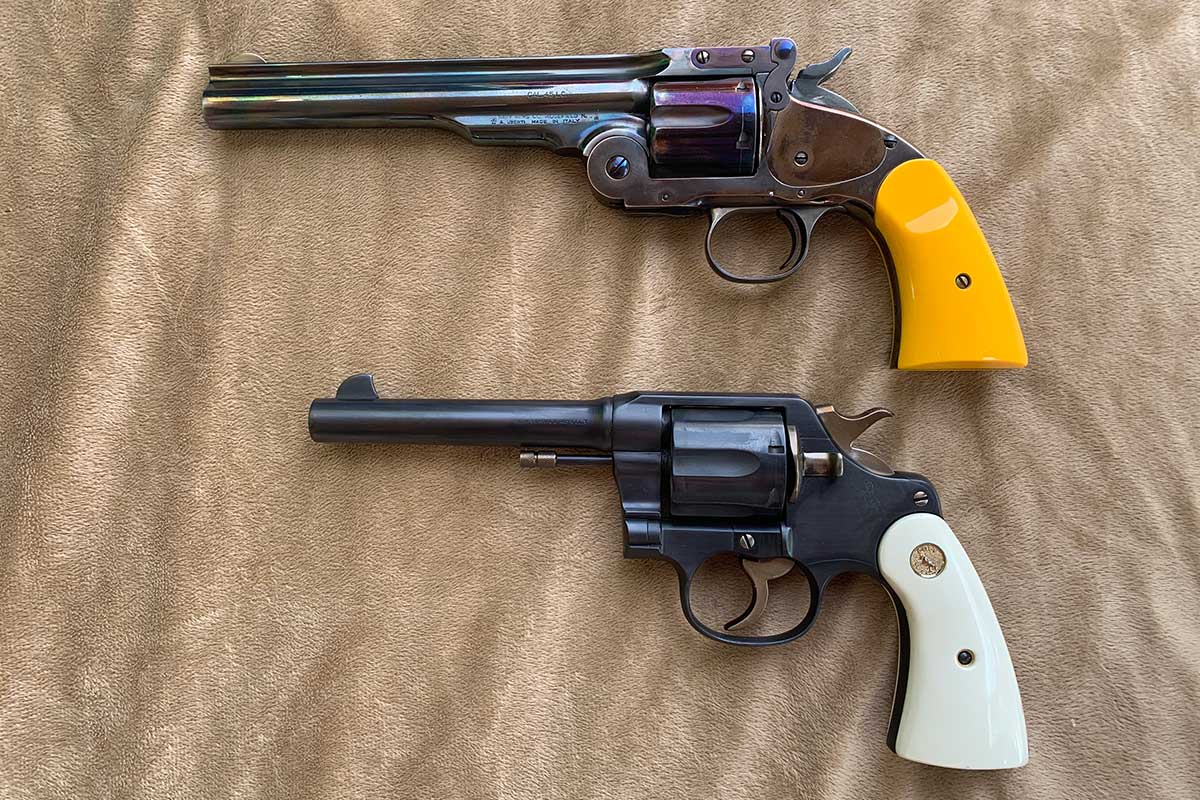
DRILLS
Instructors Lew Gosnell and Aimee Grant did a great job putting a spin on routine drills while keeping them fun. For example, on a man-against-man contest, rather than face the target and wait for the “fire” command, the shooters looked at each other and movement, by either contestant, was the signal to draw and fire. The first shooter to make a hit on the steel target won the “gunfight.”
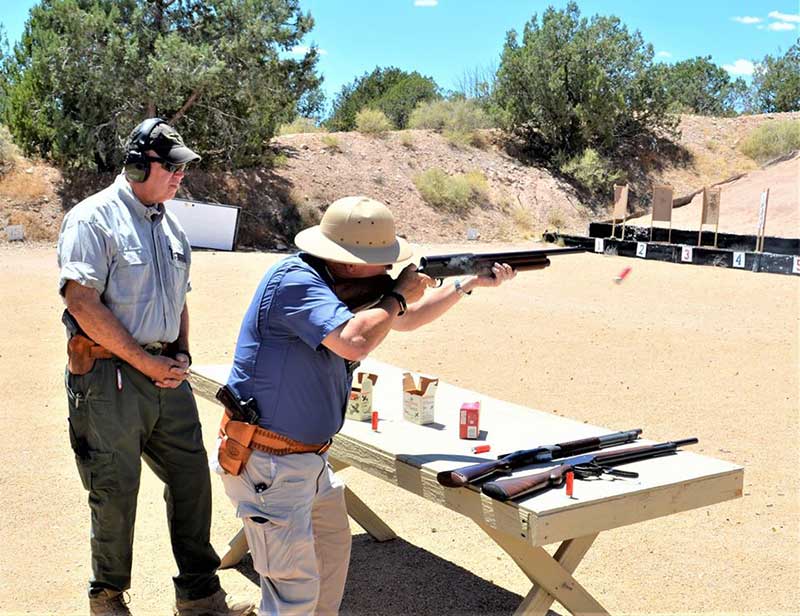
Gunsmith David Fink chambers a round from the lever-action 1887 while empty shell is still in the air. Photo: Mike Detty

Gunsite Chief Executive Officer Ken Campbell, cutting loose with the Remington 11. Photo: Mike Detty
Revolvers are obviously slower to reload than the semi-autos, so just like shotguns we spent a lot of time loading what we shot—one-shot drill, load one round; two-round drill, load two rounds; failure drill, load three rounds, etc.
We shot a school drill where the possible score is 50 points. The twist here was that if a shooter did not shoot a perfect score, his final score was zero.
On the third day we shot one-handed from a saddle.
OLD WARHORSE
For the double-action day I used my Colt New Service, chambered in .45 Colt, made in 1907. Two years after this one was made, the U.S. Army adopted this large frame revolver as the Model 1909—two years before the iconic 1911 became the standard issue sidearm. A while back I had it expertly refinished for many more years of shooting, for both recreational use and self-defense (see New Life For a New Service https://gunsmagazine.com/gear/new-life-for-a-new-service/).
Although not as light and easy to conceal as almost any modern pistol, there is something comforting about a big heavy revolver that will launch a 250-gr. semi-wadcutter at 900 feet-per-second. For the event at Gunsite I used Black Hills Ammunition .45 Colt 250-gr. RNFP loads.
LOAD WHAT YOU SHOOT
In the movie the Shootist with John Wayne, when giving a shooting lesson, J.B. Books tells Gillum to leave the hammer down on an empty chamber for safety. When asked what if you’re expecting trouble, he says, “load six if your insides tell you to.”
Trying to keep the event as true to the period as possible, this became more difficult with the single-actions as they were to be reloaded, but with the hammer down on an empty chamber. Easier said than done. Remember Ruger did not come out with the transfer bar, which made carrying six rounds safely, until 1974.
A revolver I have taken to Gunsite for several events is my Uberti reproduction S&W Model 3 Schofield and the unique top-break revolver is always sure to attract interest and curiosity and due to the top-break action is easy to load and unload.

Retired Border Patrol officer Ed Head back in his element protecting the border from banditos. Photo: Mike Detty
Major George Schofield, serving with the 10th Cavalry in Kansas, learned of the No. 3 and became S&W’s sales agent for Colorado and Kansas. He later made some design changes and was granted patents that included a different latch and an improved extraction system. Hence the name Schofield was forever associated with the Smith & Wesson revolver.
The No. 3 has four hammer positions. After pulling the trigger, the hammer is all the way forward at rest with the integral firing pin protruding from the breech face.
Cocking the hammer to the first click retracts the firing pin, and the cylinder remains locked. This actually allows the Schofield to be carried fully loaded, although I’ve always been a bit wary about any “half-cocked” position—there is a good reason for the old saying, “Don’t go off half-cocked.”
Another click back unlocks the cylinder so that it rotates freely. In either one of these partially cocked positions, the latch can be activated and the barrel and cylinder rotated down to simultaneously eject the shells.
The fully cocked hammer position is all the way back ready to make a loud noise.
While the Uberti reproduction will also chamber .45 Colt, I used authentic .45 Schofield ammo from Black Hills Ammunition.
COMING TO AMERICA
For the semi-auto I took another reproduction—a 1911A1 imported by SDS Imports. Made in Turkey by TISAS, it is the closest reproduction of the gun used by the U.S. Army I have found. About the only thing different from the original is a magazine well that is slightly beveled and a polished feed ramp and barrel lip.
I didn’t just want to compete with the 1911A1, I wanted to give it as much of an evaluation during the short time I had with it as possible. Over the day I fired in excess of 200 rounds of mixed ammunition including 230-gr. full metal jacket, 228-gr. cast round nose lead and 200-gr. cast semi-wadcutters and did not experience a single malfunction.
Since I wanted to remain pure to the “period correct” theme, I used a GI flap holster on a web belt and web magazine pouches. I knew full well this would leave me out of the running in any man-against-man contests, but I did manage a respectable third place. Considering the flap was secured by the stud/hole arrangement on the holster I was quite content with my placing.
One of the differences between the 1911 and 1911A1 is the longer spur on the grip safety to avoid hammer bite. And although I was not bitten by the hammer, the narrow hammer spur caused enough discomfort to the web of my hand to make me appreciate the wide beavertail on modern 1911s.
One thing all three handguns had in common were the small and narrow front sight with matching small rear sights. As expected as distance increased, accuracy decreased even more than usual.
LAWDOG FOWLING PIECES
For a break from the late July Arizona sun, we had a show-and-tell session planned. When my turn came I brought out three shotguns that saw use by lawmen (and outlaws) in the early 1900s, and all three were John M. Browning designs. I have covered these extensively in my GUNS Magazine shotgun columns.
The first was a reproduction Winchester 1887 lever-action. This was a gun Browning really didn’t want do design, but Winchester insisted on it for brand identity.
Up next was an original Model 1897 made in 1907. This pump gun is probably the most identified shotgun used by U.S. troops in the trenches of World War I.
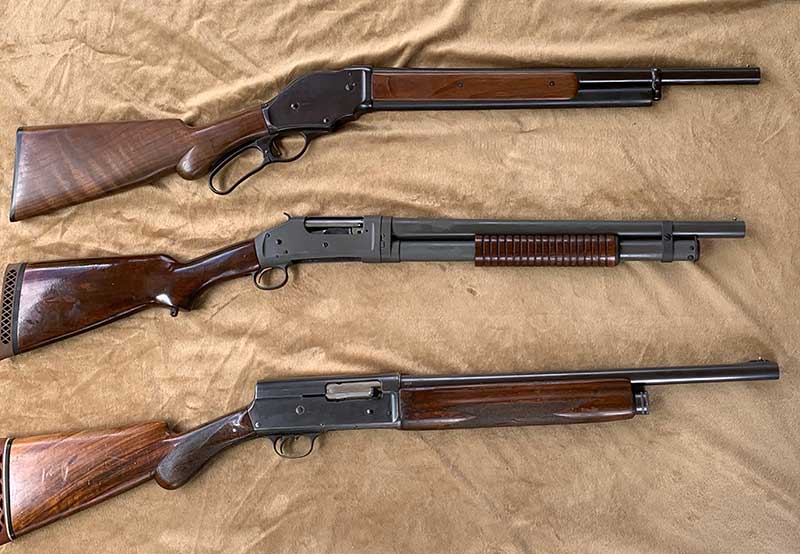
Class enjoyed hearing about and shooting historic shotguns. Top to bottom: Winchester Model 1887, Winchester Model 1897 and 1905 vintage Remington Model 11.
Finally I presented the Remington Model 11. Introduced initially as the Browning Auto-5, Remington purchased the rights to produce it starting in 1905. My Rem 11 is part of the first production run by Remington in 1905.
An interesting side note on the Remington 11 is that by rearranging friction rings on the magazine tube and recoil spring it can be set for either light or heavy loads and I demonstrated to the class how to accomplish this.
All attendees were given the chance to shoot each shotgun.
All shooting does not need to be tactical, or even practical for that matter. An event like this gives us the chance to kick back, reflect on our heritage and just have fun.
GUNSITE
(928) 636-4565
www.gunsite.com
BLACK HILLS AMMUNITION
(605) 348-5150
www.black-hills.com
